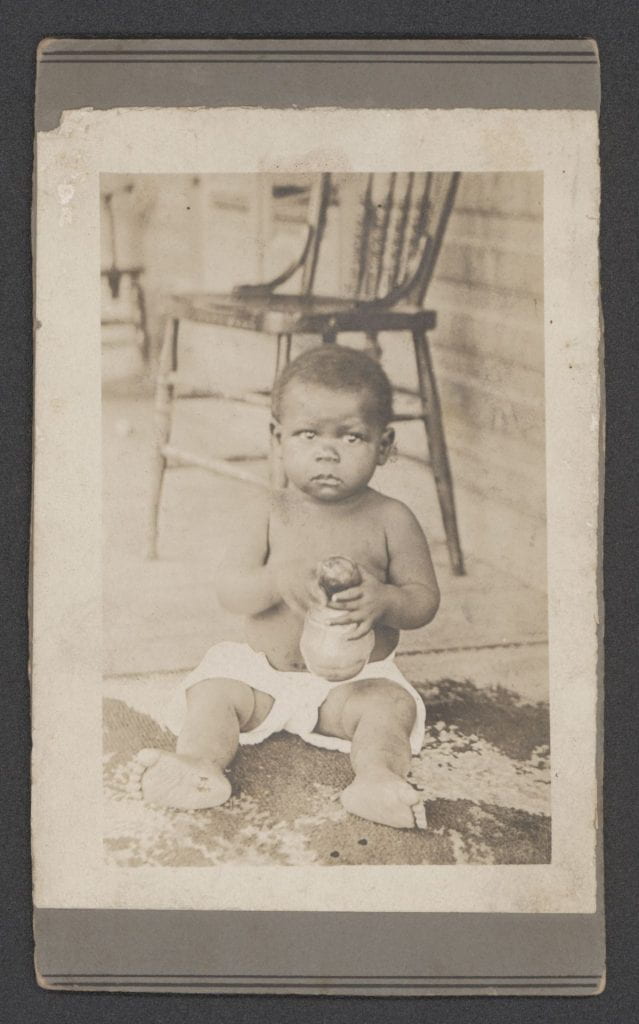
Do you see yourself out there?
Where do you see your likeness when you travel around the world?
How do you know where you belong or where you’re going?
It is often said that representation matters. Portrait photography is representation. It is proof that we have existed throughout time and within all spaces. If we are listening, as Tina Campt invites us to do, portrait photography tells us our stories. It whispers our nightmares and screams our triumphs or maybe it whispers our triumphs and screams our nightmares. Portrait photography is proof that we are here. Black people exist in a world that often believes it is safer if we are dead. A world that was built on our backs and by our hands but would have us to believe that we possess no value. That is the importance and relevance of portrait photography.
Then we must ask – what do collections of portrait photography offer us? What do they offer the artist and what do they offer the scholar? This is a complex question. If we are to find the answer, I believe that we must turn again to Campt’s recommendation of listening. Collections of Black portrait photography offer us the chance to listen to the sitter, to the artist, to the viewer of the photo, to the scholar, and to ourselves.
On the sitter:
Think about the last time you asked someone to take your picture.
Why did you ask?
Did you feel good or like your outfit?
Was the moment important?
Did you need a new headshot?
Did you want to remember what you looked like right before you decided to change it?
The chances are that you had a reason or a purpose behind the request. You had something that you wanted that photograph to say. You wanted someone to listen to it. Even if that someone was you.
Maybe you just wanted to remember or to be remembered.

On the artist:
As the sitter of the photo there is often something that we hope to share with the world. Yet, no matter how much we want the viewer, the artist, or the scholar to listen; we ultimately lose control when it is time for them to hear. The sitter offers the artists the opportunity to capture their story. However, it is this through this very offer that the sitter ultimately becomes the coauthor of that story alongside the artist. The artist then has the important responsibility of telling the story justly. When we consider this in terms of collections the artist is receiving several attempts to tell this story. In the collection the story is told across time and through different frames. Yet, the responsibility remains the same. The artist must tell a story alongside the sitter. A story that the viewer and/or the scholar will ultimately decipher from their own vantage points.
On the viewer:
What was the last photograph you viewed?
Who was in the photo?
Where were they?
What were they trying to tell you or themselves in the photo?
Did you listen?
We often cannot help but create a story when we look at photographs. We decide that the smiling sitter was happy or that the crying baby was tired. We decide that family in the wedding photograph was elated and that all the photos from prom must mean the teens had a wonderful time.
I was captured smiling in every single photo during my prom sendoff. However, I was having the worst day right up until the moment that I walked into the venue (over an hour after those photos were taken).
Maybe you just want to believe that the smile is real. Maybe it is easier to listen to the photo when the story is a happy one.
On the scholar:
Portrait photography collections offer the scholar the opportunity to study history through the eyes of someone else. It offers the chance for the scholar to learn visually. Learning is enhanced when it becomes tactile. When you can physically see what someone endures or how they thrived. Collections are also importance for the scholar to learn how to reduce harm through their own story telling. Scholars are often looked to for their expertise. Once a scholar has told the story is it often cemented in time as the truth. The scholar must be sure to remove their own bias or consider how their vantage point impacts their story telling. They must listen to the story of the sitter not the story that forms from their own experiences.
On ourselves:
What harm do you cause by creating your own story from a photo?’
What bias do you carry into the story telling?
How do you put your bias aside once you’ve discovered it?
Though our personal experiences can color our lives it is crucial that we do not allow them to fully color the life of someone else. There are times when our experiences and vantage points are invaluable when viewing portrait collections. What is most important is that as scholars we first listen to the sitter, then the artist, and the viewer of the photo before we listen to our own experiences. We must ensure that we are not projecting violence or harm into the collections based on own bias.

